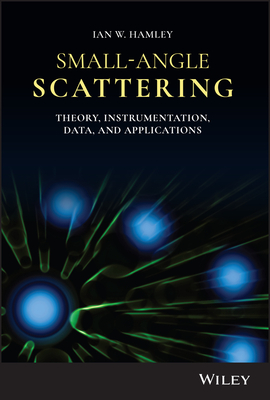Securing Network Infrastructure
暫譯: 保護網路基礎設施
Sairam Jetty , Sagar Rahalkar
- 出版商: Packt Publishing
- 出版日期: 2019-03-25
- 定價: $1,750
- 售價: 8.0 折 $1,400
- 語言: 英文
- 頁數: 538
- 裝訂: Paperback
- ISBN: 1838642307
- ISBN-13: 9781838642303
-
相關分類:
Web-crawler 網路爬蟲、資訊安全
立即出貨 (庫存=1)
商品描述
Key Features
- Develop a cost-effective and end-to-end vulnerability management program
- Explore best practices for vulnerability scanning and risk assessment
- Understand and implement network enumeration with Nessus and Network Mapper (Nmap)
Book Description
Digitization drives technology today, which is why it's so important for organizations to design security mechanisms for their network infrastructures. Analyzing vulnerabilities is one of the best ways to secure your network infrastructure.
This Learning Path begins by introducing you to the various concepts of network security assessment, workflows, and architectures. You will learn to employ open source tools to perform both active and passive network scanning and use these results to analyze and design a threat model for network security. With a firm understanding of the basics, you will then explore how to use Nessus and Nmap to scan your network for vulnerabilities and open ports and gain back door entry into a network. As you progress through the chapters, you will gain insights into how to carry out various key scanning tasks, including firewall detection, OS detection, and access management to detect vulnerabilities in your network.
By the end of this Learning Path, you will be familiar with the tools you need for network scanning and techniques for vulnerability scanning and network protection.
This Learning Path includes content from the following Packt books:
- Network Scanning Cookbook by Sairam Jetty
- Network Vulnerability Assessment by Sagar Rahalkar
What you will learn
- Explore various standards and frameworks for vulnerability assessments and penetration testing
- Gain insight into vulnerability scoring and reporting
- Discover the importance of patching and security hardening
- Develop metrics to measure the success of a vulnerability management program
- Perform configuration audits for various platforms using Nessus
- Write custom Nessus and Nmap scripts on your own
- Install and configure Nmap and Nessus in your network infrastructure
- Perform host discovery to identify network devices
Who this book is for
This Learning Path is designed for security analysts, threat analysts, and security professionals responsible for developing a network threat model for an organization. Professionals who want to be part of a vulnerability management team and implement an end-to-end robust vulnerability management program will also find this Learning Path useful.
商品描述(中文翻譯)
**主要特點**
- 開發一個具成本效益的端到端漏洞管理計劃
- 探索漏洞掃描和風險評估的最佳實踐
- 理解並實施使用 Nessus 和 Network Mapper (Nmap) 的網路枚舉
**書籍描述**
數位化驅動著當今的技術,因此組織設計其網路基礎設施的安全機制變得至關重要。分析漏洞是保護網路基礎設施的最佳方法之一。
這條學習路徑首先介紹網路安全評估的各種概念、工作流程和架構。您將學會使用開源工具進行主動和被動的網路掃描,並利用這些結果分析和設計網路安全的威脅模型。在對基礎知識有了堅實的理解後,您將探索如何使用 Nessus 和 Nmap 掃描網路中的漏洞和開放端口,並獲得進入網路的後門。隨著您逐步深入各章節,您將獲得如何執行各種關鍵掃描任務的見解,包括防火牆檢測、作業系統檢測和訪問管理,以檢測網路中的漏洞。
在這條學習路徑結束時,您將熟悉進行網路掃描所需的工具以及漏洞掃描和網路保護的技術。
這條學習路徑包含以下 Packt 書籍的內容:
- Sairam Jetty 的《網路掃描食譜》
- Sagar Rahalkar 的《網路漏洞評估》
**您將學到的內容**
- 探索各種漏洞評估和滲透測試的標準和框架
- 獲得漏洞評分和報告的見解
- 發現修補和安全加固的重要性
- 開發衡量漏洞管理計劃成功的指標
- 使用 Nessus 執行各種平台的配置審核
- 自行編寫自定義的 Nessus 和 Nmap 腳本
- 在您的網路基礎設施中安裝和配置 Nmap 和 Nessus
- 執行主機發現以識別網路設備
**本書適合誰**
這條學習路徑是為安全分析師、威脅分析師和負責為組織開發網路威脅模型的安全專業人員設計的。希望成為漏洞管理團隊一部分並實施端到端穩健漏洞管理計劃的專業人士也會發現這條學習路徑非常有用。
目錄大綱
- Introduction to Network Vulnerability Scanning
- Understanding Network Scanning Tools
- Port Scanning
- Vulnerability Scanning
- Configuration Audits
- Report Analysis and Confirmation
- Understanding the Customization and Optimization of Nessus and Nmap
- Network Scanning for IoT, SCADA/ICS
- Vulnerability Management Governance
- Setting Up the Assessment Environment
- Security Assessment Prerequisites
- Information Gathering
- Enumeration and Vulnerability Assessment
- Gaining Network Access
- Assessing Web Application Security
- Privilege Escalation
- Maintaining Access and Clearing Tracks
- Vulnerability Scoring
- Threat Modeling
- Patching and Security Hardening
- Vulnerability Reporting and Metrics
目錄大綱(中文翻譯)
- Introduction to Network Vulnerability Scanning
- Understanding Network Scanning Tools
- Port Scanning
- Vulnerability Scanning
- Configuration Audits
- Report Analysis and Confirmation
- Understanding the Customization and Optimization of Nessus and Nmap
- Network Scanning for IoT, SCADA/ICS
- Vulnerability Management Governance
- Setting Up the Assessment Environment
- Security Assessment Prerequisites
- Information Gathering
- Enumeration and Vulnerability Assessment
- Gaining Network Access
- Assessing Web Application Security
- Privilege Escalation
- Maintaining Access and Clearing Tracks
- Vulnerability Scoring
- Threat Modeling
- Patching and Security Hardening
- Vulnerability Reporting and Metrics

























